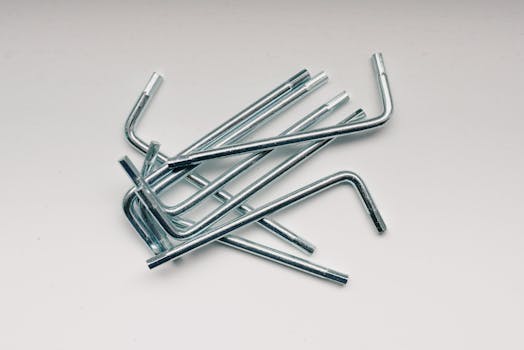Strategies to Mitigate Wi-Fi Interference from Neighboring Networks
Wi-Fi interference from neighbors is a issue in densely populated areas such as apartment complexes and urban neighborhoods. This interference can degrade your network’s performance, causing slower speeds and intermittent connectivity.
Understanding the root causes and applying targeted solutions can significantly improve your wireless experience. This article explores practical identify and reduce Wi-Fi interference from nearby networks.
Identifying Sources of Wi-Fi Interference
Types of Interference
Interference arises when multiple wireless signals overlap on the same or adjacent channels, causing signal degradation. Electronic devices, physical obstructions, and competing Wi-Fi networks are typical sources of interference.

Neighboring Wi-Fi routers are often the primary culprit in shared living spaces, especially when many devices operate on the popular 2.4 GHz band. , devices like microwave ovens, cordless phones, and Bluetooth gadgets can contribute to signal disruption.
Tools to Detect Interference
Wireless analysis tools help visualize surrounding networks and identify overlapping channels. Apps such as WiFi Analyzer for Android, NetSpot for macOS and Windows, and inSSIDer provide detailed insights into signal strength and channel usage.

Using these tools, you can scan your environment to determine which channels are congested and which are less utilized. This data is for selecting the channel for your router.
Optimizing Router Settings to Reduce Interference
Choosing the Right Wi-Fi Channel
The 2.4 GHz band consists of 11 channels in the US, but only channels 1, 6, and 11 are non-overlapping. Selecting one of these channels with the least traffic reduces interference from neighboring networks.

For example, if most neighbors use channel 6, switching your router to channel 1 or 11 can enhance performance. In contrast, the 5 GHz band offers many more channels with minimal overlap, making it ideal for interference reduction.
Adjusting Frequency Bands
Modern routers support both 2.4 GHz and 5 GHz bands, often called dual-band routers. Using the 5 GHz band mitigates interference because it has a shorter range and more channels, which reduces congestion.
Devices compatible with 5 GHz should connect to this band, while older devices may remain on 2.4 GHz. Configuring your router to prioritize 5 GHz connections helps minimize interference from neighbors who might predominantly use 2.4 GHz.
Modifying Transmit Power
Reducing your router’s transmit power can limit the signal range, decreasing the chance of overlapping with neighbors’ networks. This approach is useful in close quarters where powerful signals from multiple routers cause interference.
However, lowering transmit power too much may reduce coverage within your home, so it’s important to find a balance that maintains connectivity while minimizing interference.
Hardware Upgrades and Placement Techniques
Investing in Modern Routers
Upgrading to a router that supports the latest Wi-Fi standards like Wi-Fi 6 (802.11ax) can improve interference handling. Wi-Fi 6 includes features such as OFDMA and MU-MIMO, which optimize network efficiency in crowded environments.
Higher-end routers also offer better antennas and more advanced firmware, allowing for greater control over channel selection and transmit power. This makes them more resilient to interference from neighboring devices.
Router Placement
Physical placement of your router dramatically affects signal quality and interference levels. Positioning the router centrally and elevated within your home reduces obstructions and the chance of signal overlap with neighbors.
Avoid placing the router near thick walls, metal objects, or other electronic devices that generate interference. Experimenting with different locations can help identify the spot with the best signal strength and lowest interference.
Using External Antennas and Signal Boosters
External antennas can be adjusted or upgraded to improve signal directionality and strength. Directional antennas focus the Wi-Fi beam towards your devices, reducing spillover into neighbors’ areas and vice versa.
Signal boosters or mesh Wi-Fi systems can extend coverage indoors, allowing you to reduce router transmit power while maintaining strong signals where needed. This reduces interference by confining the Wi-Fi signal within your property boundaries.
Advanced Techniques to Combat Wi-Fi Interference
Enabling Quality of Service (QoS)
Quality of Service settings prioritize critical traffic such as video calls and gaming, helping maintain performance despite interference. While QoS does not reduce interference directly, it helps manage bandwidth more efficiently.
Configuring QoS on your router can improve user experience by allocating resources to important applications, mitigating the of slower connections due to interference.
Switching to Wired Connections
Where possible, using Ethernet cables for stationary devices eliminates reliance on Wi-Fi and avoids interference altogether. Wired connections provide stable, high-speed links unaffected by wireless congestion.
For devices that require mobility, powerline adapters can extend the wired network through electrical wiring, reducing Wi-Fi dependency. This hybrid approach can significantly improve overall network performance in congested environments.
Comparison of Wi-Fi Bands and Their Susceptibility to Interference
| Feature | 2.4 GHz Band | 5 GHz Band | Wi-Fi 6 (Both Bands) |
|---|---|---|---|
| Number of Channels | 11 (3 non-overlapping) | Up to 25 non-overlapping | Same as 2.4 GHz & 5 GHz |
| Range | Longer | Shorter | Improved range with beamforming |
| Interference Level | High (crowded, overlaps) | Low (less crowded) | Reduced via advanced tech |
| Speed | Lower maximum speed | Higher maximum speed | Highest speeds with efficiency |
| Device Compatibility | Most devices | Newer devices | Newest devices |
Maintaining a Healthy Wi-Fi Environment Over Time
Regularly Updating Router Firmware
Router manufacturers release firmware updates to improve performance and fix bugs, including interference management. Keeping your router’s firmware current ensures it operates with the latest optimizations and security patches.
Check your router’s admin interface or manufacturer’s website periodically to download and install updates. This maintenance step is critical for long-term network stability.
Monitoring Network Performance
Consistent monitoring allows you to detect new sources of interference early and adapt your settings accordingly. Use network analysis tools regularly to assess channel usage and signal quality.
Adjusting router settings or relocating hardware when performance drops helps maintain Wi-Fi conditions despite changing environments or new neighbors.
Educating Household Members
Informing family or housemates about interference factors and proper Wi-Fi use prevents unnecessary congestion. Encouraging them to connect to the 5 GHz band or use wired options reduces overall wireless traffic.
, minimizing the number of active devices and limiting high-bandwidth applications during peak times can ease network strain and improve performance.